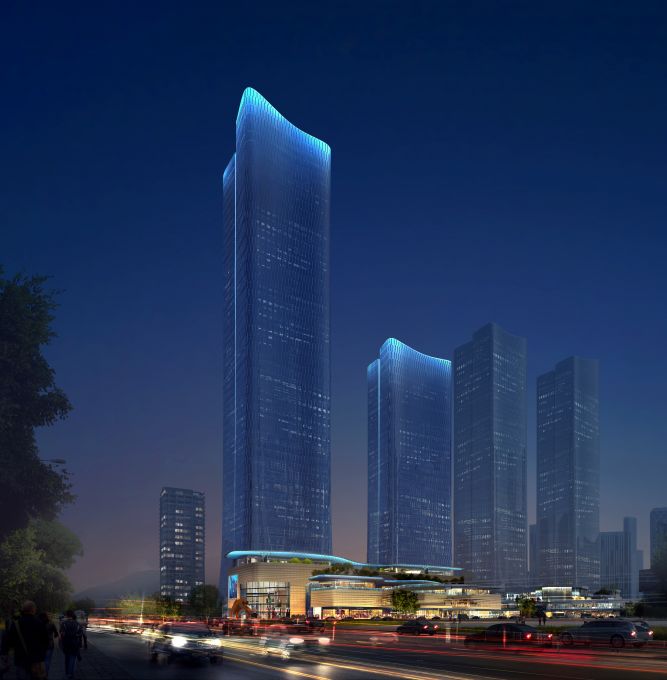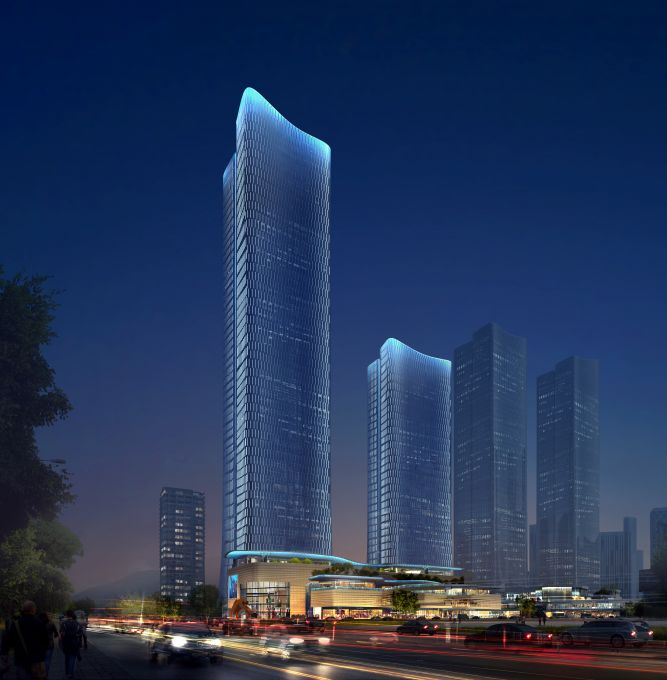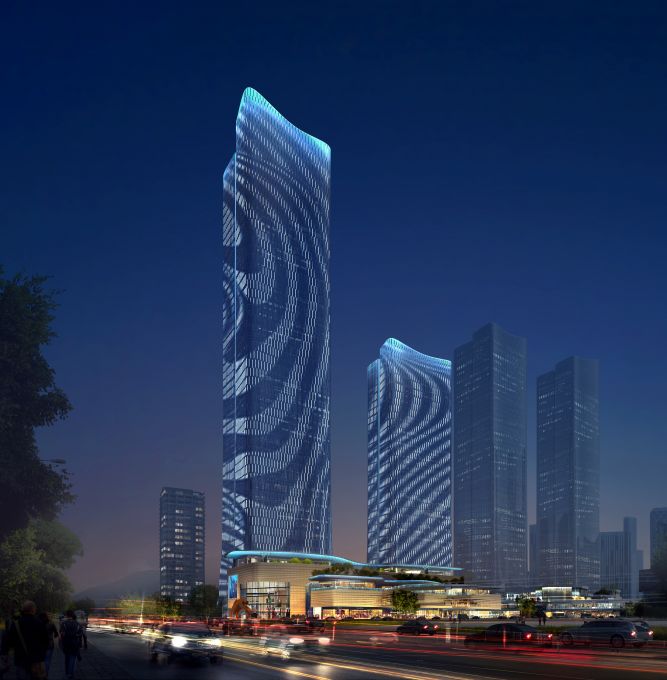项目概况:
商业综合体灯光方案设计是一个复杂的过程,它涉及到美学、功能性、节能和环保等多个方面。
1. 项目定位与需求分析:首先,需要明确商业综合体的功能定位、目标客户群以及预期的商业氛围。这将决定灯光设计的整体风格和照明需求。
2. 设计目标与原则:确定灯光设计的目标,比如是要营造舒适的购物环境、突出建筑特色、还是创造节庆氛围。同时,遵循设计原则,如整体性、艺术性、安全性和节能性。
3. 照明规划:根据商业综合体的布局和建筑特点,进行照明规划。这包括确定照明的重点区域、光线的方向和角度、以及照明的层次感。
4. 灯具选择:选择合适的灯具类型,如LED灯、投影灯、轮廓灯等,并考虑灯具的光效、寿命、能耗和安装方式。
5. 照明布局:详细规划每个区域的照明布局,包括基础照明、重点照明和装饰照明。要考虑光线的分布均匀性,避免过亮或过暗的区域,同时减少眩光。
6. 智能控制系统设计:设计智能照明控制系统,以实现照明的自动化控制,提高节能效果和照明管理的便捷性。
7. 节能措施:在设计中融入节能措施,如使用节能灯具、合理控制照明时间和亮度、利用自然光等。
8. 安全规范:确保照明设计符合电气安全规范,采取必要的防触电、防雷击等安全措施。
9. 施工图纸与技术规范:制作详细的施工图纸和照明技术规范,为施工提供准确的指导。
10. 施工与调试:在施工过程中,严格按照设计图纸和规范进行安装,并在完成后进行灯光调试,确保照明效果符合设计要求。
11. 效果评估与优化:施工完成后,对照明效果进行评估,根据实际效果进行必要的调整和优化。
12. 后期维护与管理:制定照明系统的维护计划和管理策略,确保照明系统长期稳定运行。
在整个设计过程中,还需要不断地与建筑师、室内设计师、业主以及其他相关方进行沟通和协调,确保灯光设计方案能够顺利实施,并达到预期的效果。
Lighting scheme design of commercial complex is a complex process, which involves many aspects such as aesthetics, functionality, energy saving and environmental protection.
1. Project positioning and demand analysis: First, it is necessary to clarify the functional positioning, target customer base and expected business atmosphere of the commercial complex. This will determine the overall style of lighting design and lighting requirements.
2. Design goals and principles: Determine the goals of lighting design, such as creating a comfortable shopping environment, highlighting architectural features, or creating a festive atmosphere. At the same time, design principles such as integrity, artistry, safety and energy saving are followed.
3. Lighting planning: Lighting planning is carried out according to the layout and architectural characteristics of the commercial complex. This includes determining the focus area of lighting, the direction and Angle of light, and the level of lighting.
4. Selection of lamps: Choose the right type of lamps, such as LED lights, projection lights, wheeled lamps, etc., and consider the light efficiency, life, energy consumption and installation of lamps.
5. Lighting layout: Plan the lighting layout of each area in detail, including basic lighting, key lighting and decorative lighting. Consider the uniformity of light distribution, avoid areas that are too bright or too dark, and reduce glare.
6. Intelligent control system design: Design intelligent lighting control system to achieve automatic control of lighting, improve energy saving effect and convenience of lighting management.
7. Energy-saving measures: Incorporate energy-saving measures in the design, such as the use of energy-saving lamps, reasonable control of lighting time and brightness, the use of natural light.
8. Safety specifications: Ensure that the lighting design meets the electrical safety specifications, and take necessary safety measures to prevent electric shock and lightning strikes.
9. Construction drawings and technical specifications: Make detailed construction drawings and lighting technical specifications to provide accurate guidance for construction.
10. Construction and commissioning: During the construction process, installation is carried out in strict accordance with the design drawings and specifications, and lighting debugging is carried out after completion to ensure that the lighting effect meets the design requirements.
11. Effect evaluation and optimization: After the construction is completed, the lighting effect is evaluated, and the necessary adjustment and optimization are made according to the actual effect.
12. Later maintenance and management: develop maintenance plans and management strategies for the lighting system to ensure long-term stable operation of the lighting system.
Throughout the design process, it is also necessary to constantly communicate and coordinate with architects, interior designers, owners and other relevant parties to ensure that the lighting design scheme can be smoothly implemented and achieve the desired effect.




